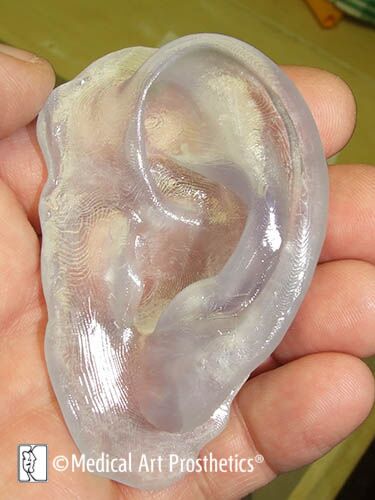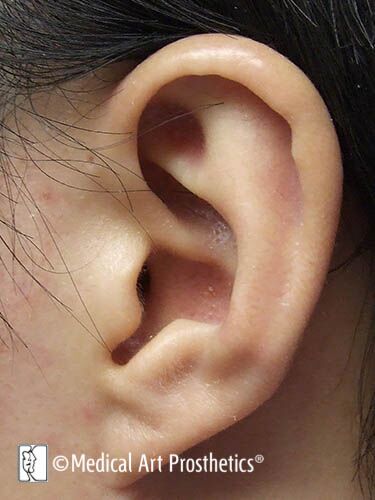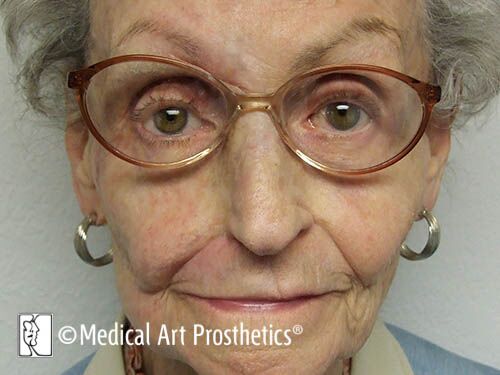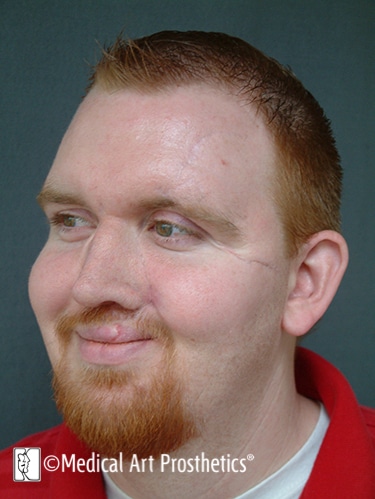Medical Art Prosthetics has been a leader in investing in new digital technologies to streamline the initial design and shaping of prototypes for eye, nose, ear prosthetics as well as hand and foot prosthetics. As independent career clinical anaplastologists we enjoy the enrichment of daily experimentation and discovery that benefits all of our patients.
Our love of this challenge and our reputation for exceptional prosthetics results has earned us the support of many returning patients and referring maxillofacial prosthodontists, and surgeons from medical subspecialties and professional organizations such as:
- Mohs Micrographic Surgery
- Otolaryngology/Head and Neck Surgery
- Plastic and Reconstructive Surgery
- Oculoplastic and Reconstructive Surgery (ASOPRS)
- American Society for Surgery of the Hand (ASSH)
- American Academy of Maxillofacial Prosthetics (AAMP)
Prosthetics for the face are thoughtfully created for people that need to breathe, chew, laugh, smile, and manage their delicate prosthetic restoration each day. Prosthetics for the extremities are made for people that want to regain both the natural appearance of their hand or foot as well as regain as much function as possible to walk with stability and grasp or hold objects in a relaxed and natural way. We are here to provide you the prosthesis you need.
Sculpting and design of your prosthesis

Fractions of a millimeter make the difference between a good fit and a great fit, and finessing the mold in such tiny increments is an intuitive process that is crucial to success in facial anaplastology.
Life-Like Silicones

Prosthetic materials are diverse and are selected in view of the method of attachment, durability concerns, tissue mobility, etc. Experience through specialization has been the key to our success in combining materials and offering some of the most innovative and life-like outcomes available.
Long-Distance Technology
The use of scanning and milling technology has been incorporated into our treatment process. Certain anatomical models of the patient can be digitized and used to re-create the mirror imaged, missing structure. This highly accurate process streamlines certain treatment plans. It is especially helpful in auricular prostheses.
Our long experience with skin coloration and visual acuity as credentialed artists allows us to deliver strikingly accurate results for clients even working with them through the mail! We appreciate the loyalty of patients who would rather travel back to see us every few years or work with us through the mail rather than trying to find a different service closer to their home.
Prosthetic Alternatives
An alternative to adhesive or implants:
- Retain an orbital prosthesis via glasses. This method requires no use of adhesive or surgery for implants. The prosthesis is permanently attached to glasses and comfortably rests into place.
- User-friendly slip design stays putno surgery. There is no glue; it is extremely lightweight and comfortable. A MAP technique developed and published in 1995.
- Bi-faced medical adhesive tape securely attaches the ultra lightweight silicone/polyurethane.

Customized for Your Needs
We are often contacted to provide nasal prostheses after our client has had their nose removed and is still healing or undergoing treatment.
However, we prefer if possible to see the patient prior to surgery and prepare a hollow lightweight nasal form that can be gently taped into place. This helps because the patient has something comfortable and protective to wear almost immediately after surgery. The cover might also reflect the correct size and shape of their nose. Then, after complete healing has occurred we can create the final prosthesis.



















